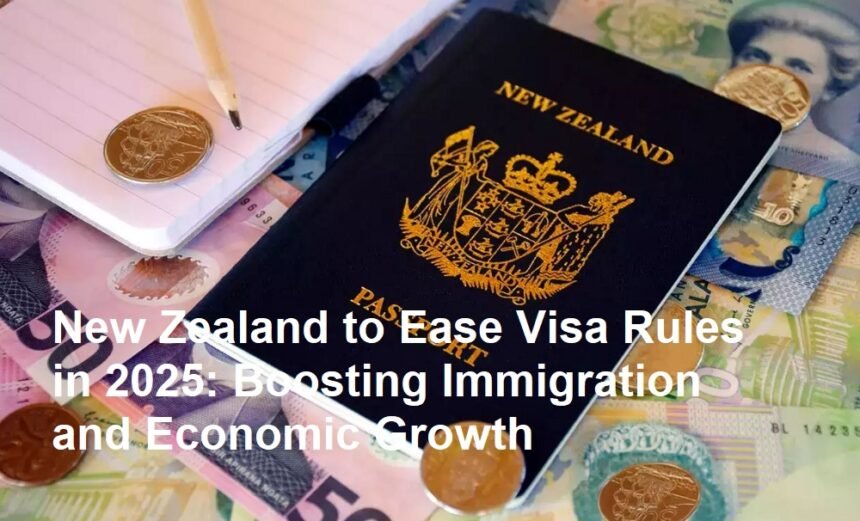WELLINGTON, NEW ZEALAND — The New Zealand government has announced plans to relax its visa regulations starting in 2025, a move aimed at addressing labor shortages, revitalizing tourism, and strengthening international education. The decision aligns with the country’s post-pandemic recovery strategy and long-term economic goals, signaling a shift toward a more open and competitive immigration system.
Key Changes to Visa Policies
- Streamlined Skilled Worker Visas
- The Accredited Employer Work Visa (AEWV) program will expand eligibility criteria to include more occupations facing critical shortages, such as healthcare, construction, and technology.
- Processing times for skilled visas will be reduced from months to weeks through digitized applications and pre-approved industry partnerships.
- Revival of the Parent Category Visa
- After a five-year suspension, the Parent Category Resident Visa will reopen with revised income thresholds and sponsorship requirements, allowing families to reunite more easily.
- Tourist and Working Holiday Visa Flexibility
- Visa-free entry will be extended to citizens of additional countries, including Vietnam and India, to boost tourism.
- Working Holiday Visa quotas for countries like the UK, Germany, and Japan will increase by 20%, targeting young travelers and seasonal workers.
- Fast-Track Pathways for International Students
- Graduates with qualifications in priority sectors (e.g., engineering, renewable energy) will gain automatic eligibility for post-study work visas.
- A new “Green Skills Scholarship” will attract 500 students annually to study climate-related fields.
Why the Shift?
- Labor Market Gaps: With unemployment at a record low (3.3% in Q1 2024), industries like aged care, hospitality, and agriculture struggle to fill roles.
- Tourism Recovery: International visitor numbers remain 25% below pre-pandemic levels. The government aims to reclaim New Zealand’s position as a top global destination.
- Global Talent Competition: Countries like Canada and Australia have aggressively eased immigration rules, prompting New Zealand to act to retain its appeal.
Quote from Immigration Minister Erica Stanford:
“These changes strike a balance between meeting immediate economic needs and ensuring sustainable growth. We’re sending a clear message: New Zealand is open for talent, families, and adventure.”
Economic and Social Implications
- Positive:
- GDP Boost: The NZ Institute of Economic Research (NZIER) estimates the reforms could add NZD $4.2 billion annually by 2030.
- Cultural Diversity: Increased immigration may enrich communities, particularly in regions with aging populations.
- Challenges:
- Housing and Infrastructure: Critics warn that rapid population growth could strain housing and healthcare systems.
- Wage Suppression Concerns: Unions urge safeguards to ensure migrant workers are not exploited or underpaid.
Public and Political Reactions
- Business Leaders: Hospitality NZ CEO Steve Armitage praised the move, calling it “a lifeline for struggling cafes and hotels.”
- Opposition Parties: The Green Party supports the reforms but demands stronger environmental commitments, while ACT New Zealand warns of “unchecked immigration risks.”
- Public Sentiment: A recent 1News-Verian poll shows 58% of Kiwis back the changes, though rural communities remain divided.
Looking Ahead
The 2025 visa overhaul is part of New Zealand’s broader Immigration Rebalance Strategy, which prioritizes high-skilled migrants while reducing reliance on low-wage labor. With global migration trends shifting, the success of these policies will depend on efficient implementation and ongoing dialogue with stakeholders.
For travelers, workers, and students eyeing New Zealand, 2025 may well be the year to turn those plans into reality.
Sources:
- New Zealand Immigration Official Statement (July 2024)
- NZIER Economic Impact Report (2024)
- The New Zealand Herald: “Tourism Sector Welcomes Visa Reforms”
- Interview with Immigration Minister Erica Stanford
Stay updated via Immigration New Zealand’s official portal for detailed guidelines effective January 2025.













